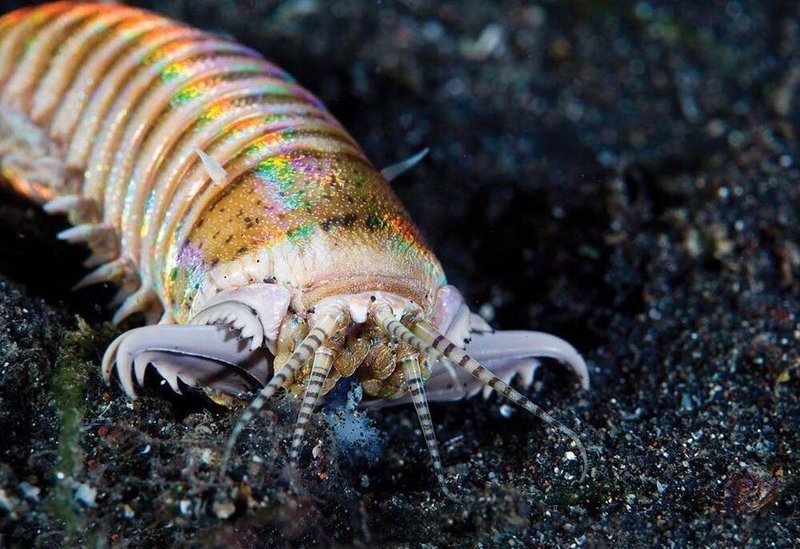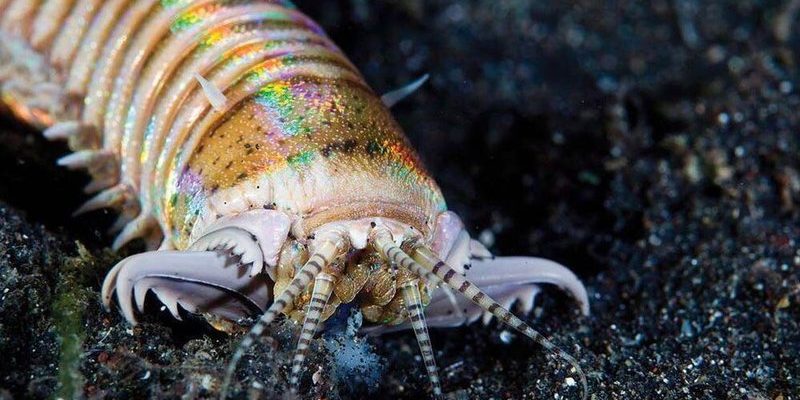
Let’s dive into this topic like we’re chilling by the beach, sipping on iced tea, and discussing whether these bristly fellows pose a threat to our beachy fun. Bristle worms, or Polychaeta, come in all shapes and sizes. They’re usually found in coral reefs, marshes, and anywhere the ocean kisses the shore. But it’s those tiny bristles that might make you think twice about splashing around in their habitat.
So, are these creatures something we should worry about? Don’t worry, I’ll break it down for you, and by the end, you’ll know exactly what roles these worms play in the marine world and whether they’re a hazard to us humans.
What Are Bristle Worms?
Bristle worms are marine worms that belong to the class Polychaeta. They’re named for the many bristles, or chaetae, that cover their bodies. These bristles give them a distinct appearance and serve a purpose as well. The worms use their bristles for movement and to anchor themselves in the sand or rocks.
You might find them in various colors, from vibrant reds and greens to muted browns. There are over 10,000 species of bristle worms, and they can range from just a few millimeters to over three feet in length! They’re quite the diverse group.
Bristle worms play a crucial role in their ecosystems. They help break down organic matter and recycle nutrients back into the ocean. In this way, they act like nature’s recyclers, ensuring that the marine environment remains healthy and balanced. Isn’t that cool?
Do Bristle Worms Bite or Stings?
Here’s where things can get a little dicey. Bristle worms do have a defense mechanism that can be quite surprising. When threatened, they can release tiny bristles that are sharp enough to cause irritation and discomfort. This is often described as a “sting,” but it’s not like being bitten by a jellyfish or a bee.
If you do get stung by a bristle worm, you might notice redness, swelling, or a burning sensation. Most people will experience mild symptoms that go away on their own. However, if you’re allergic or have sensitive skin, it’s always best to consult a medical professional.
So, while they don’t actively bite or seek out humans like some pests, it’s wise to be cautious when wading in waters where these worms live. Think of it like walking barefoot on a rocky beach—sometimes it’s better to wear shoes!
Are Bristle Worms Dangerous?
In general, bristle worms are not dangerous to humans. They don’t pose any significant threat unless you handle them carelessly. Unlike some creatures of the deep, like certain jellyfish or sea urchins, bristle worms are more of a nuisance than a true danger.
However, if you happen to be fishing or exploring tide pools, you should be aware of their presence. Wearing gloves or using tools to handle anything you find in the water can help you avoid a painful surprise.
What’s interesting is that some species of bristle worms are also known to be a food source for various marine animals. They play a role in the food chain, helping sustain life in their ecosystems. So, while we might view them as a potential threat, they’re doing their part for the ocean.
How to Treat a Bristle Worm Sting
If you do encounter a bristle worm and end up with a sting, it’s good to know how to treat it right. Here’s a simple step-by-step guide:
- Rinse the area: Use clean water to rinse the affected area gently. This helps remove any bristles that might be stuck in your skin.
- Remove any visible bristles: If you can see the tiny bristles, carefully use tweezers to pull them out. Don’t use your fingers, as they may break off and lead to further irritation.
- Apply a cold compress: This can help reduce swelling and soothe the area. A clean cloth with ice wrapped inside works well.
- Use over-the-counter pain relief: If needed, take an over-the-counter medication like ibuprofen or acetaminophen to relieve pain.
- Watch for an allergic reaction: If you experience severe symptoms like difficulty breathing, call for medical help immediately.
Taking simple precautions and knowing how to treat a sting can keep your beach day enjoyable!
Are Bristle Worms Good for Your Aquarium?
If you’re an aquarium enthusiast, you might be wondering about the role of bristle worms in your tank. Believe it or not, these worms can be beneficial! They help break down organic waste and contribute to a balanced ecosystem. Many fish and invertebrates feed on them, making them a part of the food chain in your aquarium.
However, be cautious about their population. Too many bristle worms can indicate overfeeding or poor water quality. This could lead to a situation where they outcompete other helpful organisms, potentially disrupting your aquarium’s balance. It’s like having too many guests at a party—they can become overwhelming!
If you want to keep your bristle worm population in check, regularly clean your tank and monitor food supply. If you notice an overgrowth, consider introducing predators like certain fish species that enjoy snacking on bristle worms.
To sum it up, bristle worms are not inherently harmful to humans. Sure, they have their defenses, but with a little knowledge and care, you can enjoy the ocean without worrying too much about them. Think of bristle worms as the hard-working recyclers of the sea, keeping the ecosystem healthy while occasionally reminding us to tread lightly.
So next time you’re near the shore, appreciate these fascinating creatures from a safe distance. And if you happen to feel a sting, you now know how to handle it! Remember, it’s usually just a little nuisance rather than a significant threat. Happy beachcombing!

